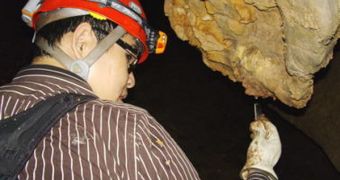Discovering microorganisms in their natural habitat, and analyzing them on the spot, could easily provide researchers with new, more elaborate data on these lifeforms. Studying them in the lab is not always the best thing to do, and at times it may be more efficient to study them in the wild. Researchers at the Arizona State University (ASU) understood this, and they developed a program that allows them to take their students to the Kartchner Caverns southeast of Tucson, where microbial populations can be readily identified, they say.
“This is important research because microorganisms perform many functions that larger organisms – humans, for example – rely on for their very existence. Microorganisms make oxygen, recycle wastes, clean up hazardous wastes. To understand how they perform these critically important tasks, we must be able to study them,” explains ASU West campus New College faculty member and associate professor Todd Sandrin, whose class benefits from the trips to the caverns. Funds for this program were secured via the US National Science Foundation (NSF) Microbial Observatories grant. ASU expert Raina Maier is the principal investigator of the grant.
Sandrin, who is also the associate director of the ASU New College Division of Mathematical and Natural Sciences, says that the formations he and his class are analyzing in the Caverns are at least 50,000 years old. “Kartchner Caverns is widely recognized as a spectacular example of carbonate cave development. The cave is one of the top 10 caves in the world in terms of mineralogical and speleothem development. The caverns represent an ideal, pristine habitat in which to study microbial community structure, function, dynamics and the role microorganisms play in speleothem formation,” he explains, adding that 99 percent of all bacteria species in the world don't grow in the lab.
Only the remaining one percent can be harvested in the tightly controlled confines of research facilities. As such, studying them in real life is the only lead experts have to go on. Sandrin believes that doing this will enable the students from his class to become more interested in the field of microbiology, and also better specialists in their respective fields. “I became most fully engaged in microbiology after learning how important the little guys really are, and this research has exceeded my expectations beyond belief. It is so wonderful to be participating in the elucidation of knowledge and scientific understanding. It is really fun and exciting that we are trying to do something new and find out what is really living in Kartchner Caverns that we cannot see,” says of the program ASU life sciences degree program senior Susanne Rust.

 14 DAY TRIAL //
14 DAY TRIAL //